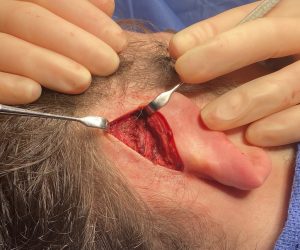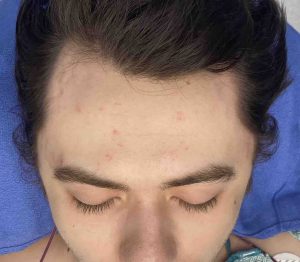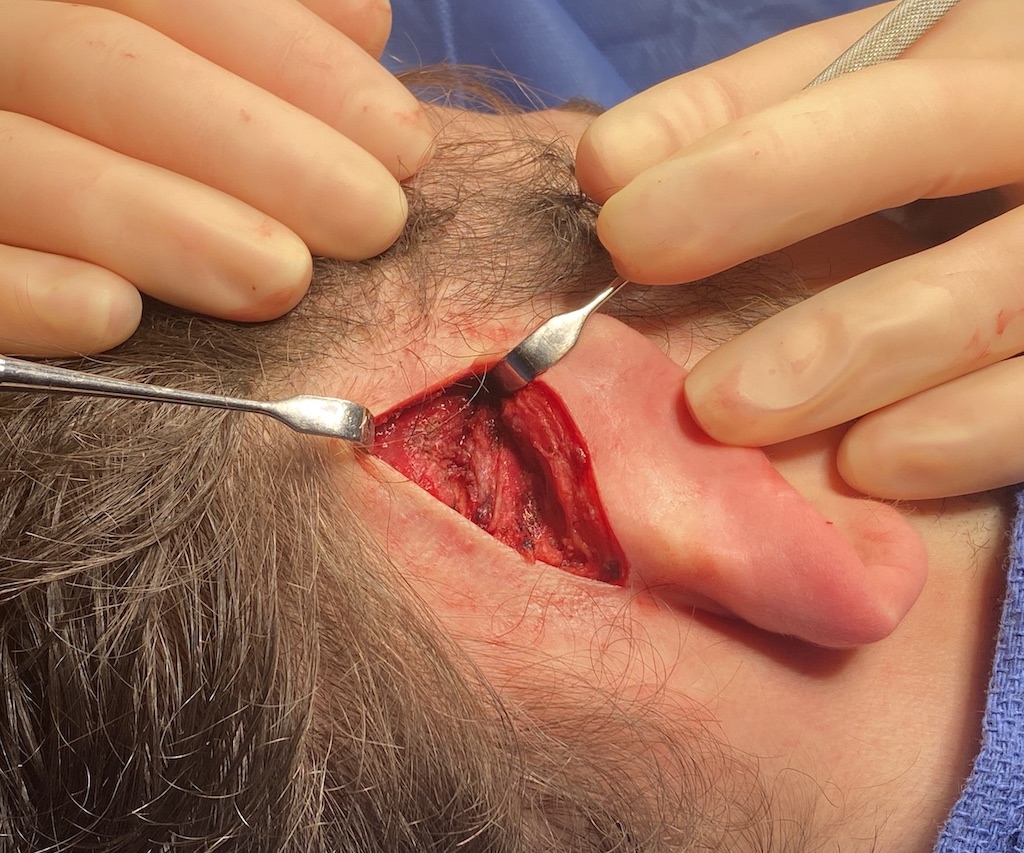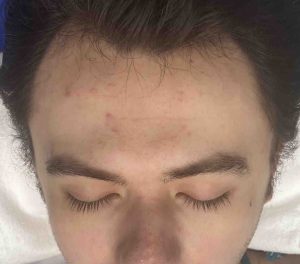Temporal reduction is a procedure that was developed as a skull reshaping procedure to narrow the wide head shape. Specifically to reduce the convex shape and fullness on the side of the head. Contrary to the perception of the need to remove bone to create this effect it is actually the temporal muscle which needs to be reduced. It is the temporal muscle that makes a significant contribution to the thickness in the side of the head.

One good way to answer these questions is to look at a recent patient example, whose postoperative recovery and outcome is typical, but still answers every postoperative patient question about the surgery. This male patient had bilateral temporal reductions and was seen today virtually at 8 weeks after the surgery. Here is his exact report.

Interestingly circumferential head measurements are not a quantitative method of assessing the result of temporal reduction that I have used previously. I have always judged it by the appearance of the sides of the head in the frontal view with the goal of a more narrow and straight shape. It would make sense that the circumferential head measurements would decrease. But whether up to 4cms would occur, or whether this is normal or above average, I can not say since this is the first time such measurements have been reported to me.
Recovery – He did report a large and disturbing amount of head swelling in the first week after the surgery. While I make a point to let patients know before surgery this is exactly what will happen and it will be disheartening (when the goal is head width reduction), it is one thing to hear it and another to actually experience it. But by 10 to 14 days after surgery one is in the benefits phase and the improvement is beginning to be seen.
Jaw Function – The most common concern about temporal reduction surgery amongst patients, because it involves muscle removal, is that it have an adverse effect on jaw opening. He reported not postoperative restrictions with jaw opening and closing even at the first day after the surgery. He could eat a normal diet the day after surgery.
Scars – Since the incisions used are in the postauricular sulcus behind the ear no visible scars result.
Dr. Barry Eppley
World-Renowned Plastic Surgeon




